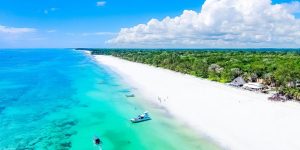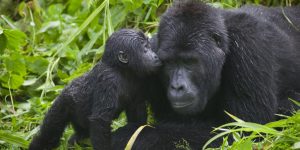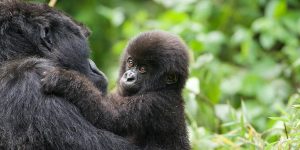
Maasai Mara is the world’s most famous Kenyan national reserve with no competition. One of the best African safari destinations to experience, at least once in your lifetime.

Welcome to Maasai Mara
National park and a National reserve is not the same ! I won’t go into details now, it would take too long. But just for you to know if you are visiting famous home of Big Cats. Masai Mara is a Kenyan National Reserve also known as Maasai Mara or simply Mara among us locals.

Sizes approx. 1510 square kilometers located within the Great Rift Valley in Kenya’s Narok County about 260km from the capital city Nairobi. The nearest major town is Narok 85 km away on extremely dusty unpaved roads. Forget the time needed to cross the European road of 260km here in Kenya. Multiply by 3 or 4 and you’ll be fine . Masai Mara has 4 main entrances: Ololomutiek, Sekenani, Talek and Musiara. The roads outside Narok to each entrance will give you an unforgettable ride and encounter with dust.
Maasai Mara is not a tribe !
Even today, through colorful brochures of cheap travel, decorated with colorful pictures and even more inaccurate information, you will be invited to a journey of your “life” and a guaranteed encounter with the Masai Mara tribe. And of course an unforgettable African adventure. Good luck!
It is named in honor of the Maasai people, the ancestral inhabitants of the area, who migrated to the area from the Nile Basin. Their description of the area when looked at from afar: “Mara” means “spotted” in the local Maasai language, due to the many short bushy trees which dot the landscape. The reserve originally got its name from the Maasai people who called the area “Mara” which in Maa (language of the Maasai) means ‘spotted’. This is exactly what the area looks like from afar. Great sweeping plains, spotted with umbrella acacia trees, bushes and animals. An open space of savannah, a wavy grassy plain on which are scattered recognizable acacias, while the vegetation is denser around the winding riverbeds of the rivers Mare and Talek. And when clouds float across the blue sky casting a shadow on the plain leaving dotted tracks, Maasai Mara is a truly a place you must visit at least once in your life. Confirmed by National Geographic https://www.nationalgeographic.co.uk/travel/2019/05/trips-lifetime-20-unforgettable-places-2019

National Reserve and private protected areas
The Masai Mara is bounded by the Serengeti Park of Tanzania to the south, the Siria escarpment (also called Oloololo escarpment) to the west and Masai pastoral ranches to the north, east and west. The Sand, Talek and Mara rivers are the major rivers draining the reserve. The Maasai Mara National Reserve at 2,170 m above sea level is home to over 95 species of animals and 570 recorded species of birds. Becoming a rarity in African parks is the wildlife roaming in complete freedom, without fences or other obstacles stopping them. Animals disregard the borders drawn on the papers, not only those that split Kenya from Tanzania but also the limits of the protected area. That’s the beauty of Maasai Mara !

Land of the Big Cats
Considered the birthplace of safari, Kenya is a home to real African Safari. All the wildlife of Africa live here and the Maasai Mara with their respective neighboring protected areas- conservancies, is a place where you will find everything that makes African wildlife unique to the world. If you are a fan of “Big cats” then Maasai Mari is the ideal place for your safari. It’s no coincidence that everything worthwhile in the world of television documentaries was filmed right here- in the Maasai Mara; BBC Big Cat Diary, Big Cats Tales and Disney’s African Cats and Disney’s big world hit “The Lion King”.

When to Visit Maasai Mara
Maasai Mara is attractive all year round. From December to March, and June to October is the right time to fully experience the beauty of Mara with pleasant temperatures. The period from April to June is not also to throw away although they may be slightly lower temperatures and few showers or rainy days which can turn your safari into a real muddy and exciting adventure. That is why prices in this “low season” period are lower compared to the rest of the year.

However, the time when all roads lead to the Masai Mara, when the best vehicles are booked months in advance, when prime locations have been sold out for a long time and there is no free proper bed to find, is a period of Great Wildebeest Migration the largest animal migration in the world. The seventh wonder of the world, the most spectacular event in the animal world is the peak. The highlight in every sense; for your pocket and experience.
Once a year over 1.5 million wildebeests, zebras, antelopes and other wildlife starts the tour between the Tanzanian Serengeti and Kenya’s Maasai Mara in search of greener pastures. The biggest attraction happens right on the banks of Mara River. They need to cross the river ! And more importantly – survive! While hungry crocodiles calmly and patiently wait under the surface, predators like hyenas and lions squat in ambush on the shore and lurk the weakest ones. Those who will not reach the much desired green pastures. If you are lucky enough to be in the right place at the right time, you will witness the true drama of the greatest spectacle of the wildlife world. Scenes of crossing the Mara River can really be shocking. My Mother was the lucky one and she experienced it just a few feet away. After a few minutes she turned her head sadly and said quietly, ” Oh God, I can’t watch this …” as the huge crocodiles relentlessly spun the wildebeest in the air like rag dolls, tossing themselves across the bloody river. And no matter how much you wish that you experience these scenes “from television”, your heart beats faster as you watch zebra taking her last breath. That is why great migration season the biggest animal spectacle on the planet is the most visited period. Crowded. Over crowded sometimes. Full stop. Regardless of the fact that for that period the prices are high, very high the best locations near or on the banks of Mara river or close to places of crossing “crossing point” were reserved and sold out long ago and up to a couple of years in advance. From July to September is the busiest time in Maasai Mara and if you would still like a slightly more private African safari, consider another period of the year.

It’s expensive, but don’t be stingy
If you really want to experience great animal migrations it will cost! It is a lifelong experience that is difficult to describe. Every nature and wildlife lover should experience it at least once in their life. But…Yes, that BUT with the biggest letters. It matters where are you located during the period of great migrations. Of course, firs row or prime locations are not cheap. Not at all! But what does some financially more affordable or cheap accommodation mean to you when the action ; says “google maps” is near but in reality miles away. Example: You are happy, you have found great accommodation, affordable for your budget outside the reserve and says the description “only half an hour to enter the park”. Okay. And there we go, catch-22! 20km in this area is not what it is from your country point of view. You hear your safari driver communicating with colleagues by radio who report events to each other and whether and where a “crossing” is being prepared and will start soon. Your adrenaline and excitement grows. And then you hear the voice of your safari driver: “There is a crossing of Mara river about to happen, but we are about 3 hours drive to the action, I’m sorry, but we will not make it on time. ” Remember: 20 km in Maasai Mara is NOT what maps are saying. And you? You will remain with a sad view lost in the vast expanse of wilderness. So, plan your budget, ask before you go and secure a lifelong experience on time.

Greetings from Maasai Mara





























